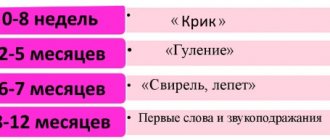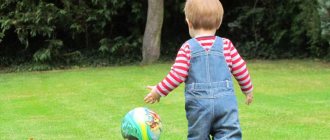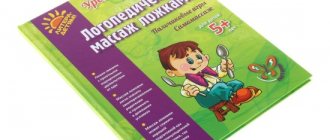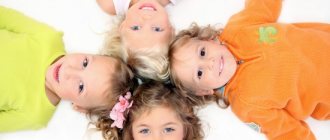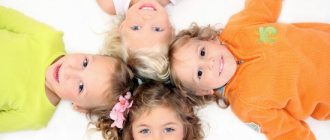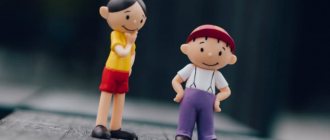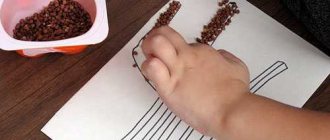Numerous studies indicate that musical exercise has a positive effect on children's intellectual development, as well as their ability to interact with others.
The most popular musical technique for preschool children in Russia is the development of Sergei and Ekaterina Zheleznov. Both methodologists have musical and pedagogical education. Extensive teaching experience allowed Sergei and Ekaterina to create comprehensive programs that are distinguished by an accessible game form and systematic approach.
The technique includes gesture, finger and movement games, staged fairy tales that the child performs to music, songs, nursery rhymes, and lullabies.
Principles of the Zheleznovs’ technique
The first principle is that children should be taught in a playful way. This principle corresponds to the norms of age-related development of children, since the leading form of activity at a young age is play. It is through play that the child learns the structure of relationships between people and their connection with objects of the outside world. At the ages of 3 to 7 years, play as a way of learning and development is most effective. For children from 1 to 3 years of age, the leading activity is manipulative; for children under 1 year of age, it is interaction with an adult. The Zheleznovs’ technique provides opportunities for development in every age period. The set of techniques includes manipulative tasks (for example, finger games) and exercises that only an adult can perform (for example, some songs and nursery rhymes).
The second principle is teaching children through physical activity: more information is absorbed in movement. This is due to the interaction of the left and right hemispheres during brain activity and, therefore, faster transmission of nerve impulses that form any mental and physical activity.
Other principles of the method - the importance of parental participation and the child’s positive attitude towards learning - are common to all early development methods.
What does this technique include?
It includes a whole range of educational games and exercises. For example, logorhythmics.
Logorhythmics on video:
The Zheleznovs’ method also includes staging theatrical scenes and singing funny songs. Moreover, they are all divided by age, and for each age category there is a suitable option. This is both the development of creative abilities and pleasure for children.
The simplest games are designed for babies from six months old, and extend to the entire preschool age. The technique can be successfully used at home, but it is also used as an element of children's development in kindergartens.
Songs with movements
As an example, we can cite songs with movements. Here you don’t need to go far, just remember the well-known “Ladushki”. The meaning of these songs is that while listening to them, the child follows a certain instruction: he makes the movements that he is asked to do in the song.
This develops his mind, allows him to learn to navigate in space and coordinate the movements of his own body. A small note: the older the child, the more meaningful and complex the songs, and the more intricate the tasks.
An example of a useful song with movements on video:
In any case, this is a great warm-up. On the one hand, this is really a game, but on the other hand, it is still learning. Children learn skills while having fun.
The only negative is that the child is limited in creativity. He does not use his own imagination, but only does what is required of him. But the action itself is beneficial, because it develops specific skills that will be useful to him in later life.
There may also be group games accompanied by music, such as blind man's buff or tag. Not only peers, but also parents can be included in the game. Moreover, this is desirable, because this way parents are in close contact with their child. This is a very important moment for children of any age, but especially younger ones.
Finger games
Let's now take finger games as an example.
Remember the familiar game for kids - “Magpie-White-sided”, where you need to list which of your children the magpie gave porridge to, and at the same time bend the child’s fingers.
Finger games are unpretentious and simple, the rhymes for them fit well into children's memory.
There is no more contact type of games! During the entire action, the adult interacts with the baby directly: holds him in his arms or sits him on his knees, strokes him, hugs him.
Finger games video:
For older children, more complex games are suitable. They can get great pleasure from dramatizing fairy tales - children have an inherent desire to imitate. Moreover, if a child has acting talent, such performances will help him to open up.
Goals and objectives of the classes
All classes with children are carried out only in a playful way. The child is not forced to do anything. The teacher and mother show the movements, and the child responds by performing as desired. The result is a fun and educational game with a child, which allows you to solve problems such as:
- development of musical ear and rhythm;
- the formation of speech as a result of repeated repetition of words - onomatopoeia;
- development of motor skills as a result of interaction with various objects - both musical and ordinary; Wooden spoons and ringing bells are very well received by children;
- close emotional contact with mom as a result of fun time together;
- auditory and tactile sensations and perception of information through music;
- strengthening general health as a result of active physical activity;
- music relaxes – it is indicated for various childhood neurological disorders, and is also a powerful prevention of neuroses in children;
- developing the ability to communicate in a team and interact with other children.
When can I start?
The Zheleznov development method is designed for children from 6 months to 7 years. As a rule, babies are offered comfortable pillows on which they can wave their arms and legs to the beat of the music. Older children are already walking around the entire perimeter of the room. But even if the baby is still very small, the mother can always start playing with him. All games fit perfectly into a child’s daily life. Here the mother carries the child to wash and hums: “Water, water, wash my face...” Or, bending and unbending the baby’s legs, she says: “Bear-toed bear...” All this is the initial stage of introducing the child to a sense of rhythm and musicality.
Structure of a group lesson using the Zheleznovs’ method
The classes offered by the Zheleznovs’ methodology include short dramatized songs, to which you either sing along with simple choruses, or use finger games, or play simple musical instruments (bells, bells, rattles, maracas, claves, tambourines, spoons, drums , plates, triangles, shakers).
All songs for children are very short, funny and easy to understand even for the little ones. By playing to these songs, the baby will not only develop fine motor skills of the fingers, but also, accordingly, speech, ear for music, imagination, memory, etc.
Classic lesson using the Zheleznovs’ method:
- Greetings.
- Warm up..
- Gesture and finger games
- Play massage.
- Musical rhythmic movements or gymnastics.
- Logorhythmics.
- Chanting, singing.
- Playing musical instruments.
- Fairy tale (from 1.8 years).
- Parting.
The lesson lasts 45 minutes, of which the preparatory part (points 1-2) takes 10 minutes, the main part (points 3-9) - 30 minutes, the final part (point 10) - 5 minutes.
Each lesson begins with welcome songs, which do not change throughout the school year. These games help the child to join the team and create a positive emotional background.
After the welcome songs, warm-up games . They help to activate attention, develop a sense of rhythm, endurance, and communication skills. Children stand in a circle, keep their hands on their waists and repeat the actions spoken in words.
The main exercises begin with finger games , the main characters of which are children's fingers, which depict butterflies, caterpillars, the sun, piglets, etc. It has long been proven that speech directly depends on the development of fine motor skills, and so-called finger games contribute to this.
Play massage relieves tension in children and promotes the development of children’s imagination: a spider running through a tree and rain dripping on its back, a ball jumping on the floor and a bear walking through the forest are equally vivid, although they are presented differently to children “receiving” a play massage.
Musical-rhythmic movements are aimed at developing an ear for music, a sense of rhythm and coordination of movements. The adult demonstrates playful gymnastic movements, and the child repeats after him.
Logorhythmics are short songs and dramatizations that need to be sung syllable by syllable, which will help develop the clarity of pronunciation of sounds and improve the baby’s articulation. In general, these are excellent classes with music without a speech therapist.
Chanting and singing begins with breathing exercises. Chanting organizes and disciplines children, promotes the formation of singing skills (breathing, sound production, sound control, correct pronunciation of vowels).
Playing musical instruments . Musical instruments for children are one of the types of educational toys. They develop fine motor skills of the hands, form a sense of rhythm, coordination of movements, teach children to distinguish the “voices” of instruments, help them master musical notation, and for example, wind instruments also develop the respiratory system and improve the functioning of the ENT organs. Among other things, such toys cultivate a child’s love of music.
Fairy tales with music develop imagination and fantasy. All these tales are taken from folklore and are well known to the children, but are supplemented with new details and musical accompaniment.
The lesson ends with a farewell song.
Composition of the method
The program is divided by age and recorded on audio and video discs and teaching aids.
This methodology includes the following collections:
- songs with movements () - here there are short marches, round dances, the first active games (blind man's buff, tag). The baby learns new movements and roles.
- finger games. Little fairy tales when moving your hands and fingers.
- fairy tales are imitations. We discover the first theatrical skills in the baby.
- funny logorhythmics
- moving lessons
- aerobics for kids (), play gymnastics - an adult shows play gymnastic movements, and the baby repeats. We strengthen our muscle corset and coordination every day and have fun.
- noisy fairy tales. Little tales for imitation and imitation of sounds. The baby learns to listen and reproduce what he hears. Fine motor skills, memory and imagination are involved.
- play massage ()
- dramatized songs, small fairy tales using toys and simple gestures
- lullabies are an adaptation of Russian folk lullabies with the addition of sounds of nature or animals.
Advantages of the technique
“Music with Mom” brings invaluable benefits in raising children and contributes to such functions as:
- development of rhythm and musical abilities;
- development of fine motor skills;
- formation of correct speech skills;
- improving the general condition of the baby;
- strengthening the muscles of the spinal region, forming correct posture;
- instilling the skills to listen to and follow the instructions of parents and educators;
- establishing contacts with adults and peers;
- bringing the child closer to their parents, because classes are held on the “mother and child” principle.
Getting used to such activities, children get tired less, and any material is easily absorbed by them during the game.
Disadvantages of the method
Dancing, games and funny songs will put any child in a positive mood. But if you take a closer look, you can identify some points that are rather small nuances than shortcomings. The child is asked to strictly follow the proposed action plan. The right to choose and independently invent movements is not given. There are many complex repetitions and rhymes that little children do not immediately begin to learn. Ekaterina Zheleznova, whose methodology is used in many development centers, together with her father, composed many original songs, but mostly they are of the same type. The same words are often repeated, for example: bunny or bear and their actions, sleep, take a walk. Although for very young children it is precisely this repetition of the same type of words that is preferable.
Any parent, even without a musical education or understanding of musical literacy, can, based on this technique, comprehensively develop their child and instill in him a good taste in music.
Logorhythmics according to the method of Ekaterina Zheleznova
Many children do not like to study and do boring rote exercises. Zheleznova’s logorhythmics will interest kids. They will be happy to sing and dance. Initially, these classes were aimed at the child’s hearing. Subsequently, it was noticed that children repeat all sounds with pleasure and begin to speak better. Therefore, Ekaterina Zheleznova’s technique was improved.
There are a lot of short songs for kids. All of them are aimed at the development of crumbs. Children can be trained according to Zheleznova’s method from eight months. In each song, words and sounds are sung clearly, understandably, and legibly. Therefore, it will be easy for kids to repeat first the words and then the actions.
Logorhythmics Zheleznova provides classes not only with one child, but also with a group of children. They can be carried out in speech therapy groups, medical centers, and clinics. The more children participate in the activities, the more interesting it will be.

